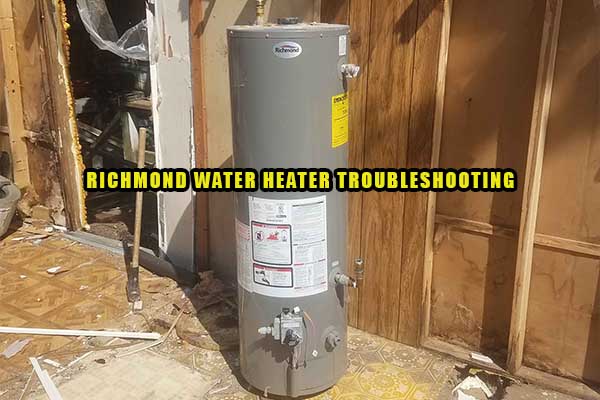We’ll cover the following problems in this complete Richmond water heater troubleshooting guide:
- Condensation.
- Yellow soot.
- The main burner won’t light or stay lit.
- The pilot light won’t stay lit.
- Rumbling noise.
- Noise from the relief valve.
- No hot water or inadequate hot water.
- The water is too hot.
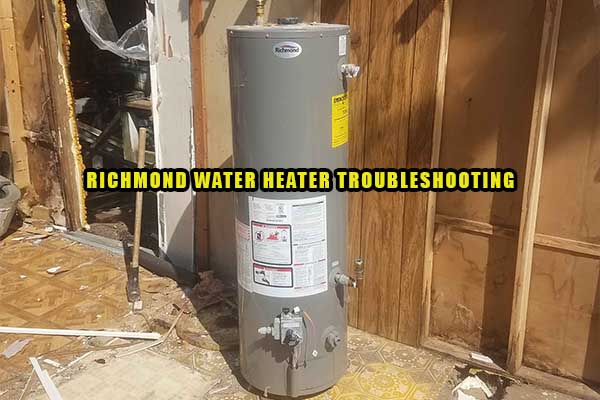
Not only that, we’ll discuss the solution to each of these problems and share quick summaries on fixing them. Without further ado, let’s get started.
Richmond Gas Water Heater Troubleshooting [A Complete Guide]
Richmond is a famous and reliable water heater brand. They make many types of heaters including gas, electric, and tankless heaters. The troubleshooting for each of these heaters is a little different as their mode of operation isn’t completely the same.
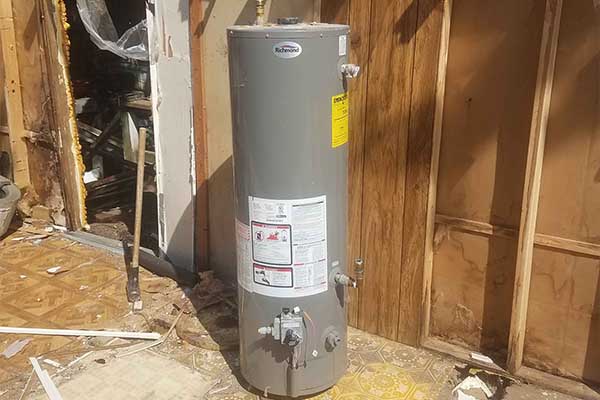
By the way, this guide won’t cover the blinking codes. If you’re seeing the LED in your gas valve displaying, then check out our post on Richmond water heater blinking light codes where we’ve covered everything about it in detail.
We’ll cover the gas units in this guide. Here are the most common issues you’ll encounter with the Richmond gas heaters:
1. Condensation
Most people frequently face this problem after they’ve installed a new Richmond heater. But in reality, this isn’t an issue. It’s just a part of the normal operation of the heater.
Secondly, it can also be caused by the moisture of products that are created during combustion. Finally, using an undersized heater that’s not enough to meet the hot water needs of you and your family can lead to condensation.
Solution:
Understand that condensation is normal when you’re using a new heater. However, if it doesn’t go away after a while, you’ll have to inspect the pipes. There could be leaks that are causing this issue but it’s rare.
In that case, you’ll have to tighten the fittings and seal the leaks. Too much condensation can damage the burners. So, make sure you address this problem quickly if the condensation issue stays for long.
Finally, if you’re using an undersized water heater, it’ll require corrective action. You need to use a heater that can actually fulfill your hot water requirements without causing any problems.
Here’s a quick summary of the reasons behind condensation in Richmond water heaters and their fixes:
2. Yellow Soot
The number one reason behind seeing yellow flame or soot on your Richmond water heater is the build-up of scale on top of the burner.

Apart from that, it can also be caused by the restriction of air inlet holes and ventilation issues.
Solution:
If you see an irregular flame from the burner, the first thing you need to do is to shut down the heater. As a dirty burner is the most likely culprit behind it, you’ll have to remove and clean it.
Here are the steps to remove the burner after you’ve shut down the heater and turned off the gas supply to it:
- Make sure the heater is cool.
- Take out the thermocouple from the gas control valve.
- Similarly, remove the pilot tube, the gas supply to the main burner, and all connections at the gas control valve.
- Remove the four screws at the burner access door to get access to the burner assembly.
- When you see the burner assembly, you can simply pull it out.
Now that you got it out, it’s time to clean it. You can use a vacuum cleaner initially to remove the dirt from it. But if there’s a good build-up of grime in it, scrub it with a mild detergent. Then, place the burner back in its place and connect everything to the gas control valve.
Hopefully, the yellow soot will issue will go away now. If it remains, the next thing you need to check is the air inlet openings. Remove all the obstruction or dirt you find in it.
Thirdly, not having enough air for combustion due to poor ventilation can also cause this issue. If that’s the issue, you need to correct it. Make sure you’re following the correct ventilation guidelines as stated below:
- The venting for the heater must be separate from the other electrical appliances in your home.
- Use of the correct materials and techniques in vent assembly.
- The vent pipe should be secured to the blower housing and make sure you follow the minimum clearance rules.
- Prevent moisture damage around vent termination.
- The vapors released from primer and vent pipe cement must be dissipated before you apply power.
Violation of any of these things can cause yellow soot. For example, if you use the same venting for multiple appliances, it’ll cause this yellow flame problem along with many other issues. So, make sure you’re not doing any mistakes.
That’s why it’s so important to have the heater installed by a professional. If you’re making any of these mistakes, connect with an expert to fix them, and then you’ll get the proper blue flame from your heater.
Here are all the reasons behind yellow flame or soot and their fixes at a quick glance:
3. Main Burner Won’t Light
This problem is even worse than the last one. At least, the burner was working in the previous issue. Here are the most common reasons behind this issue:
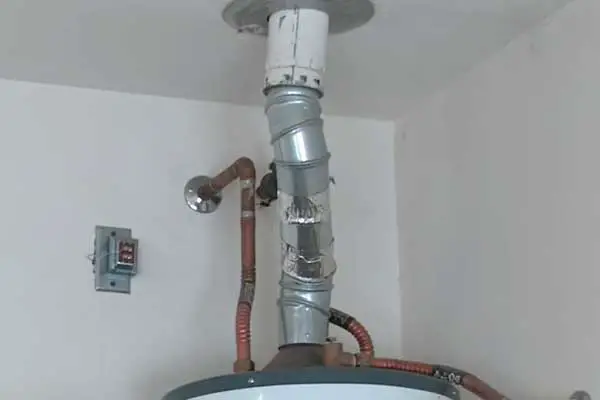
- Air has found its way into the gas line.
- Either the exhaust or a vent pipe is blocked.
- Faulty pressure switch or the pressure switch hose is kinked.
- The wiring connections aren’t fully secure.
- The combustion shut-off device was tripped.
- Faulty gas control.
Solution:
The right solution to get the main burner to light up will depend on the issue that was causing it to fail in the first place. We’ll discuss the fixes in the same order we listed the problems.
First of all, there can be no air in the gas line. If that’s the issue you’re dealing with, you need to get the air out of the gas line. You can use a bleeder valve to bleed the air from the gas line.
It’s located at the highest point of the gas line and you can release the air by opening it. Make sure you’re bleeding the gas line in a well-ventilated area to avoid fire hazards. If you don’t feel like doing it yourself, you can always hire an expert to do it.
Secondly, inspect if the vent pipe or the exhaust is blocked. If there’s any dirt or debris there, cleaning it will do the trick.
Thirdly, make sure that the pressure hose switch isn’t kinked. If the pressure switch itself has gone bad, you’ll have to replace it.
Next, you’ll have to make sure that the wiring connections are nice and tight. If they’re not secured properly, the main burner won’t light. You can always take the help of an expert if you don’t know how to do it.
If the combustion shut-off device was tripped, it’s recommended that you hire a professional technician to do it. It’s not safe for a normal person to do it.
Finally, it can also be the fault of the gas control. It’s the worst-case scenario as you’ll have no other option but to replace it. It’s not complicated to replace it on your and we’ve discussed how you can do it in our Richmond water heater gas valve problems guide. Check it out if you’re interested.
Hopefully, the above picture will help you remember what you should do when you’re facing any of the issues that keep the main burner from lighting up.
4. Main Burner Won’t Stay Lit
The most common culprit behind the main burner not staying lit is the tripping of the combustion shutoff device. However, it can also happen due to a bad thermocouple.
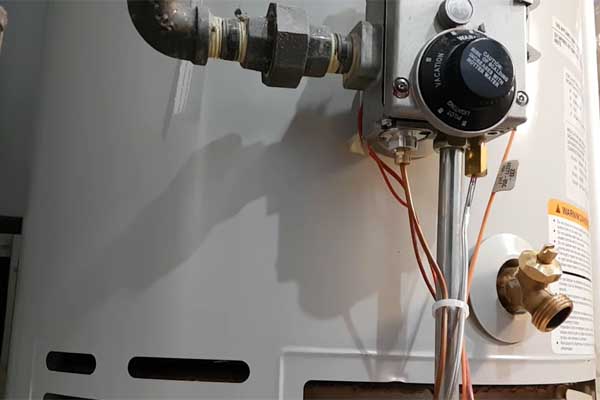
When a thermocouple is worn out, it won’t sense the flame and can signal the gas control valve to turn off the main burner.
Solution:
As mentioned before, you’ll need the help of a qualified technician if the combustion shut-off device was tripped. But if you’re dealing with a bad thermocouple, you can easily replace it on your own.
In fact, you can find thermocouples at a relatively cheap price as well. So, it’s not a fix that should bother you much. You’ll follow the same steps as you did when cleaning the burner assembly. Then, inspect the thermocouple.
Sometimes, it won’t be damaged but bent away from the pilot light. It happens during shipping in most cases. In such instances, you can bend it back and that’ll solve the issue. It can also be dirty and you’ll have to clean it if that’s the case with your thermocouple.
But if it’s actually worn out, it’s time to replace it. Take it out through the bottom cover holes and put the new one in its place. Hopefully, doing these fixes will get your main burner to stay lit.
Here’s a quick list of the main reasons why the main burner won’t stay lit and how you can fix it.
5. Pilot Light Won’t Stay Lit
There are numerous reasons why the pilot light won’t stay lit. Among them, the top two reasons are issues with the thermocouple or a bad gas control valve.
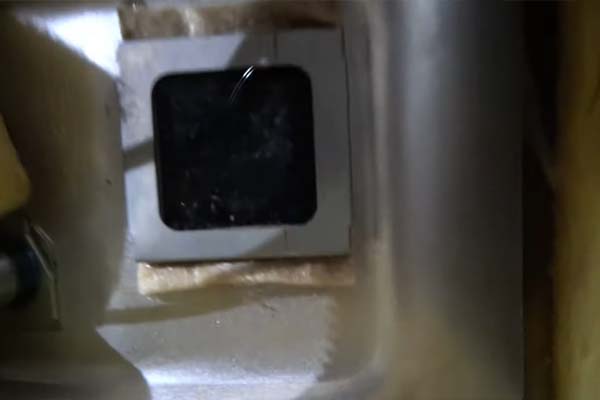
Apart from that, it can also be caused by:
- A broken TRD
- Dirty pilot tube.
- Lack of oxygen.
- Flex tube issues.
- Faulty FVS.
Solution:
You already know what to do if you’re facing the top two issues like a bad thermocouple and gas control valve. However, if you’re facing any of the other issues, head on over to our guide on why the Richmond water heater pilot light won’t stay lit. We’ve given the fixes to all these issues in detail there.
Here are the solutions for failing to light the pilot in the Richmond water heaters:
6. Rumbling Noise
If you’re hearing strange noises from the heater like a rumbling sound, there’s a 99.99% chance that it’s due to the build-up of sediment.
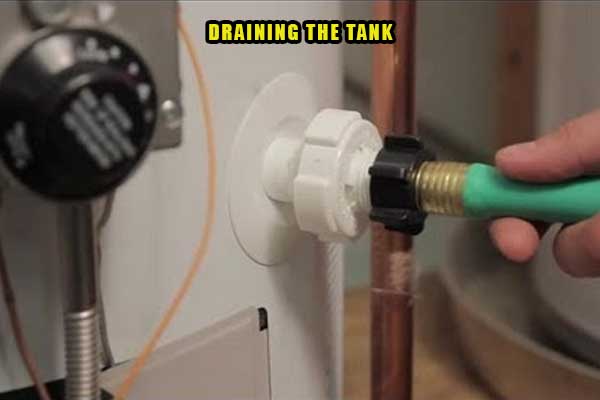
Thankfully, you won’t have to go through a diagnosis process for this issue as you already know the reason behind the problem.
Solution:
The solution is simple here – you’ll have to remove the sediment build-up from the tank. In order to do that, the tank needs to be drained.
Here’s how you can do it in nice and easy steps:
- Shut off the power supply to the water heater and wait for it to cool down.
- Turn off the cold water supply.
- Take a garden hose and attach it to the drain valve of the heater.
- Place the other end of the garden hose outside and start draining the tank.
- You can open a hot water faucet if you want the draining process to be quicker.
When you completely drain the tank, turn on the cold water supply once again to flush the tank. The mineral deposits will go out and this issue will be solved. Finally, close the drain valve and disconnect the garden hose when you’re done cleaning the tank.
Make sure you fill the tank completely with water before you start using it again. As a preventive measure, keep draining a few quarts of water from your water heater’s tank from time to time to avoid the build-up of minerals.
Here’s the summary of fixing the rumbling noise issue:
7. Noise From The Relief Valve
When the water inside the tank gets heated up, it has the tendency to increase in volume. It leads to increased pressure in the water system. This issue is called thermal expansion.
Hearing a popping or draining noise from the relief valve indicates that you’re facing a severe thermal expansion issue. In a closed system, the relief valve will start making a noise when the pressure starts to get to unbearable levels. It can also fail at times due to excessive pressure.
Solution:
In the short run, the first thing you need if you’re facing this issue is to call a qualified technician. Ignoring this problem over a long period can damage the heater itself. He’ll figure out what’s wrong and correct it.
Replacing the relief valve won’t solve the issue here. You have a fundamental problem here and that’s the excessive build-up of pressure. A permanent fix can be solved by installing an expansion tank between the check valve and the water heater.
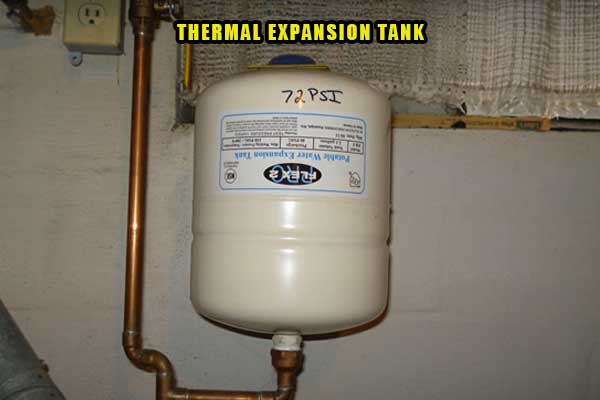
However, there are also other methods to deal with thermal expansion. If you’re interested in exploring them, you can reach out to a plumber and he’ll find the most effective solution for you.
If you’re facing noise from a relief valve issue, the above picture is a quick guide to what action you should take.
8. No Hot Water Or Inadequate Hot Water
Some of the harmless reasons behind getting insufficient hot water from your Richmond water heater include switching off power to the heater and setting the thermostat too low. Apart from that, the other issues that can cause not enough hot water are:
- Too much water usage overpowered the capacity of the water heater.
- The gas pressure is low.
- Multiple hot water faucets are turned on at the same time.
- The LED may throw the blinking codes and tell you the reason.
- The combustion shutoff system was tripped.
Solution:
Firstly, make sure that the heater has a power source. The heater should be plugged in, have a 120V power supply, and be switched to the On position. Next, check the thermostat and turn it up if it’s set too low.
If you’ve been using too much hot water for a while, allow the heater to recover and you’ll get hot water after some time. The same thing to having too many hot water faucets open. Close them and eventually, you’ll get hot water.
Next, inspect the gas supply. The gas valve should be open and have the right gas pressure. If you smell gas leaks or you suspect gas supply issues, you can check the pressure with a manometer and fix this issue.
If the heater throws the blinking codes, you know that you can visit our guide and find out all the fixes for those issues in detail. Finally, if you’re dealing with a combustion shutoff device issue, you need the help of a technician.
Here are the main reasons behind no hot water from your Richmond heater and their fixes at a glance:
9. Water Is Too Hot
The most obvious reason behind getting water that’s too hot is setting the thermostat too high. But if you’ve not set the temperature too high, you most likely have a faulty gas control thermostat.
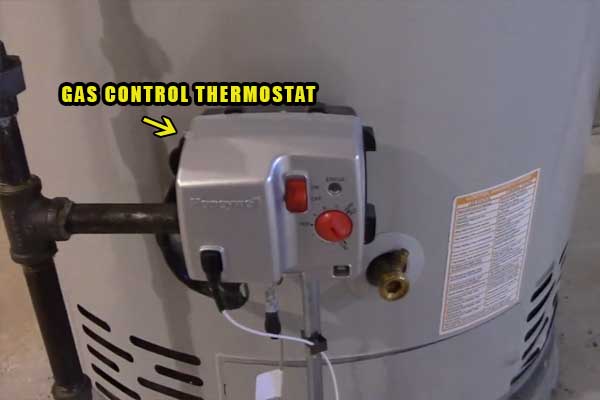
Solution:
First, check the thermostat and dial it down if you’ve set it too high. If that doesn’t do the trick, you’re dealing with a bad thermostat. Replace it and then you’ll no longer get too much hot water from the heater.
Here’s a shortcut to solving the overheating water issue:
How To Maintain Richmond Gas Water Heaters
It’s troublesome and can take a lot of work to figure out what’s wrong with your heater and take corrective actions after you’ve discovered problems with it. But you can easily stay on top of things and prevent your heater from developing problems by maintaining it properly.
Here are some maintenance tips that will make it easier to keep your heater in top-notch conditions and catch potential problems ahead of time:
- Do a routine inspection of the burner, gas control thermostat, and pilot assembly to make sure they’re operating properly.
- Inspect the temperature pressure valve at least once a year and check that it operates freely.
- Remove the anode rod every six months of usage and inspect its condition. It should be replaced when more than 6 inches of the core wire is exposed.
- Make sure that the venting system is clean and free of any obstruction. The vent pipes should also be secured tightly. If you find any dirt or soot, take corrective measures to clean it.
- Chlorinate the water supply if you want to avoid the “rotten eggs” smell that comes from water with a high amount of sulfate.
FAQs:
What does the anode rod do?
It’s a device that sacrifices itself by attracting sediment and corrosive elements. The anode rod takes all the damage so that the tank can be free of corrosion.
How many heating elements are there in Richmond electric heaters?
There are two heating elements in Richmond electric heaters. The one located at the top is called the upper heating element and the other is called the lower heating element.
Where is the ECO located?
The ECO is located right above the upper heating element. It’s a safety device that shuts off power to the heater if the temperature of the water gets too high.
How to turn on the vacation mode in Richmond electric heaters?
Press the left arrow button on the keypad of the heater and hold it down until the Vacation indicator lights up.
Conclusion
All the major problems you’ll come across when you use these heaters have been covered in this Richmond water heater gas troubleshooting guide. The great thing is that you already know how to fix these issues as well.
If there’s anything that seems out of reach for you, always use the service of a qualified technician. You can’t solve everything on your own and it’s okay to go for outside assistance in such cases. Comment below if you have more questions about troubleshooting Richmond gas heaters.
